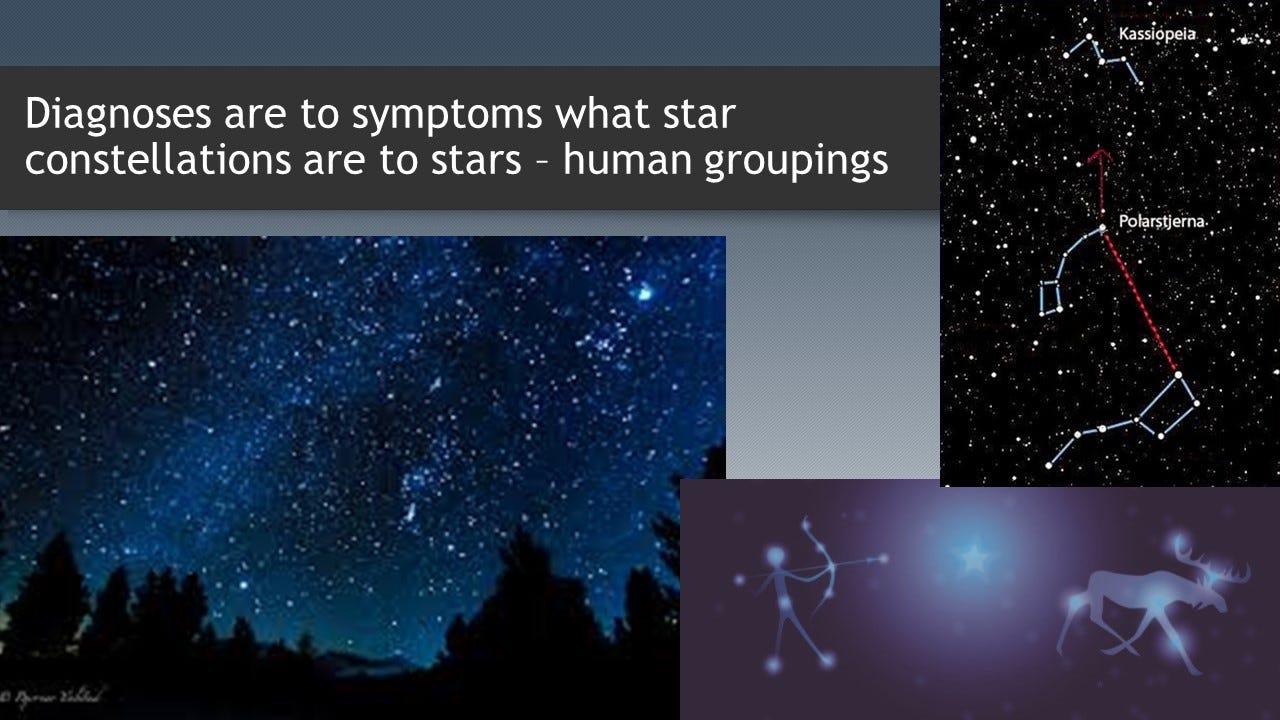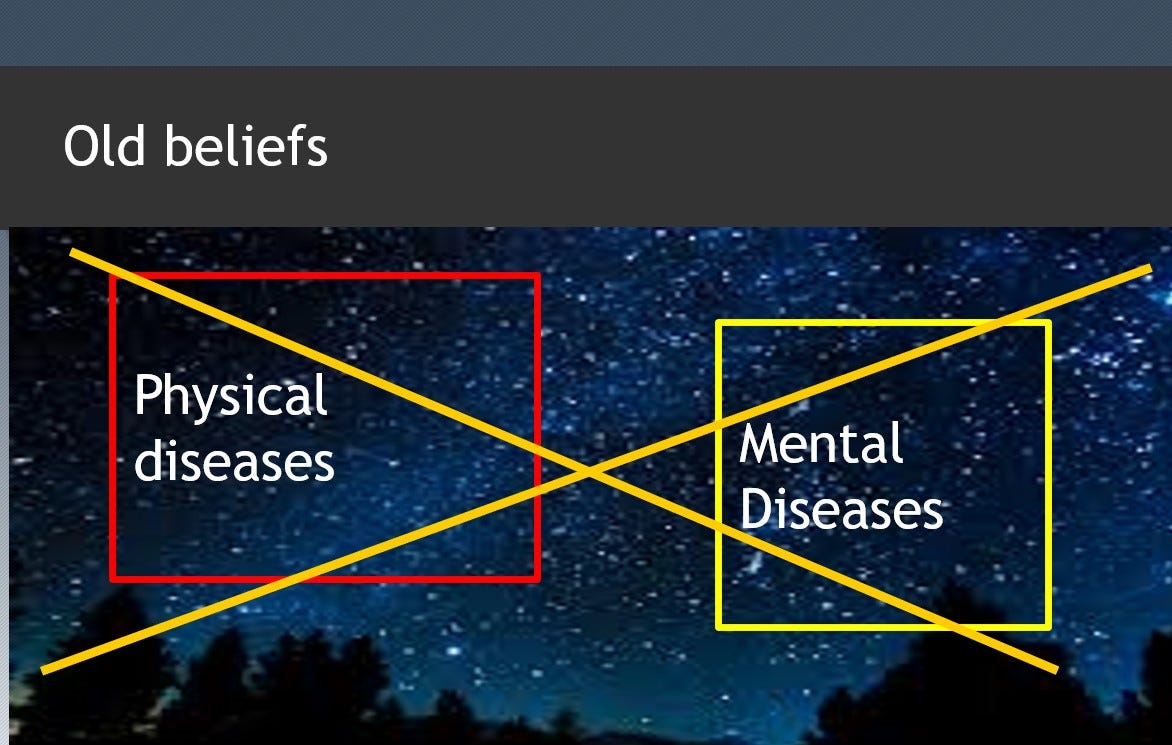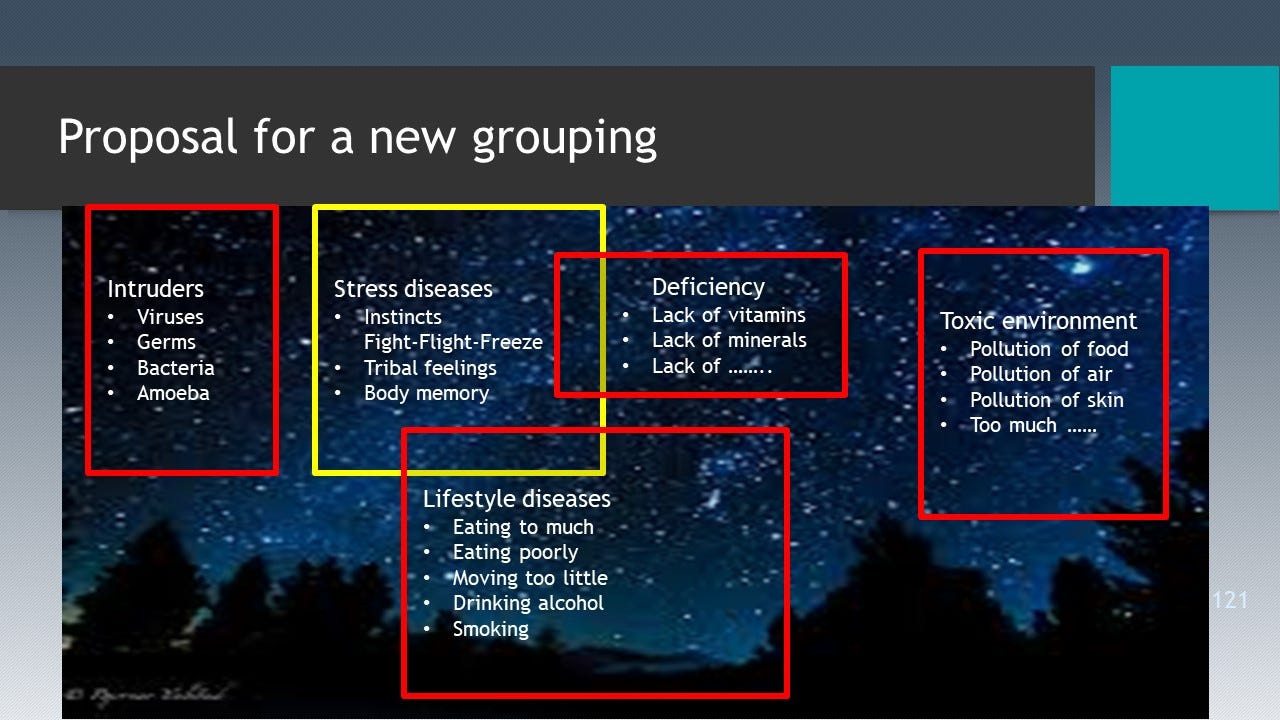Transcription of the video below + a few picture comments
Lilian Sjøberg: So today I'm sitting here with Tony and please introduce yourself.
Tony introduces himself and the brain as prediction organ
Tony Fitzgerald: Thanks, Lillian. It's lovely to meet you. Lovely to be online with you. My name's Tony. I am an innovation scientist with a medical physics background. So I've been studying medical physics and innovation essentially for nearly 25, 30 years now. And in that time, my role has been to look at the new science, evolving science, and to look at how we shortcut that journey from the new science in the science journal, straight from the academics into applications that therapists and doctors, medics, and psychologists can get their hands on and make a difference to people.
There's been so much research now around the brain as a prediction machine and how that then forms the emotional reactions we have, the physical emotions, the internal states that we have, even driving involuntary behaviors, like phobias and fears and PTSD, and deeper into also complex trauma. It also drives that complex trauma piece. So there's whole evidence of this brain as a prediction machine, and the evidence pointing to the way that it makes predictions and tests those against the world update it based on errors. And we have these beautiful mechanisms built in now to update phobias, fears, PTSD, trauma, and any emotional reaction, or behavior that's undesired and unwanted.
There's a mechanism built into this brain that evolved naturally in coordination with the prediction system to update it. So, yeah, it's how do you use that now in a clinic setting to make a difference to people?
Lilian introduces herself
LS: And I have a master's in biology and was, can you call it, upgraded to a therapist and coach, certified coach. So I think seven years, eight years ago, I left my corporate job and started all this up.
And during the education to a therapist, one of my teachers told me about a man with sclerosis that had fought himself out of a wheelchair with one of the techniques we used. And I was so surprised because it went against everything I've learned as a scientist.
And I started to make a small experiment with four people with each chronic disease, gave them five sessions. And I was surprised by what I, as a newly educated coach and therapist, could do. And then after that, I started to look out into the world to find out what was going on. And I used a technique called modeling from NLP, where you find people that have made the journey. So I looked through tons of courses, studies, and YouTube videos. These survivor stories with people that have made a journey from very sick chronic disease and toward close to healthy, and they had a long, long list of what they have done, and immediately there was nothing in common in these lists, just long listings of everything they have tried.
But reading more and more, I finally could see a pattern in these, and compared it to the studies and videos, and then suddenly it snapped that this is all about stress. And then I start to dig into that in a lot of different ways and make an online course about it. And I'm now helping people with chronic diseases, mainly people with Parkinson's, to become better due to my findings. But now I crack the code in another way than you. But I can see that we have a common theme. And that's the beauty about this, because regardless of where you come from, if you are a client, if you are one scientist, another scientist, looking into this alternative way of seeing things, then it sort of ends up in the same truth or theories. So your theory and mine are pretty close to each other.
The new science vs stuck-in-the-past-science
TF: Yes, I would imagine they are, because we're working with the same system. And I was curious because you mentioned five years ago and science. Now, if we talk about science, science, I think, is quite abreast of this stuff. If you look at the right science and not kind of stuck in the past science, kind of the people to think about it, Gabor Mate, right? I'm sure you're familiar with Gabor Mate. And the science that he presents is very clear. There's no doubt. So when we talk about science, I almost believe that these models you spoke about, you know, this guy, he's in the wheelchair. These are the kind of the widely held but outdated science concepts people have about the brain, about the body, about those things. Now, there's such a different understanding of how the brain connects with the body, how the body talks back and the brain listens and together it forms these responses to the world and these actions.
So, you know, when you talk about science, I believe science now is abreast of these changes, able to make sense of these changes.
LS: Oh, I'm really glad to hear that, because working with people with chronic diseases, I think science is a little stuck there because you have the rift, between what is mental and what is physical. I haven't met a lot that sort of are able to make that jump that it's actually connected a hundred percent.
Lilian's comment: Here is my view on diseases and symptoms in pictures. We need to bust the old beliefs, in order to help people with all sorts of “incurable” symptoms.
And even the red groups are better dealt with if you are not stressed
TF: Yes. Look, the new science of the brain now fully confirms that when you look at the rise of this understanding, the brain is a prediction machine, but the information it uses is the sensory, the extrasensory. So, yeah, the extra receptive, the external eyes, ears, nose, but also the internal. It's listening to the body at every moment. And that internal response carries more weight than the extrasensory in a lot of cases. So, look, the science is, I think, pretty clear now. The interceptive experience, the proprioceptive, so that the feelings you have in your body, those sensations map into the brain, and the brain makes sense of all of those.
And that's a pretty clear and different understanding of the brain to, I think, from this idea that mental and emotional, cognitive and emotional and limbic and separated. Right now, when you look in these directions, they're actually part of one system. There's one brain now and this one brain is making predictions. How am I going to feel? What am I going to see? What am I going to hear? It's testing those against the outside environment. And if those don't match, then it's got a couple of options. It has to get them to match somehow. So either you change your action, or we change the model of the world.
So there are these update systems built into this whole interoceptive brain system. So, yeah, when you talk about science now, I think we spoke before we started recording. The old model of the brain, cortex, limbic system, and lizard brain, it's a very old and outdated one that's been disproven. It was known to be wrong 30 years ago. It's come from just observations that kind of fitted in with how we like to think about ourselves as humans and, you know, reason versus passion and those sorts of old traditions.
Interoception is the collection of senses understanding the internal state of the body. This can be both conscious and unconscious. It encompasses the brain's process of integrating signals relayed from the body into specific subregions allowing for a nuanced representation of the physiological state of the body. This is important for maintaining homeostatic conditions in the body and, potentially, facilitating self-awareness.
https://www.wikiwand.com/en/Interoception
Grief is an example of updating the prediction process
TF: But the new understanding of the brain now is more of a prediction machine, testing predictions, and updating predictions. And, you know, just to give you an example, I came across a really nice book about grief the other day. And it is all based on this understanding, the brain is predicting what it expects, it's predicting based on the expectation. So grief, you know, you've lost a partner, you've lost someone very close and special to you. And your brain over the tens of years you might have been together having mapped the world together with your partner. So they describe grief now as the updating process as those internal models now meet the real world.
So recently I was in Slovakia, a very different culture to Australia. We flew home. We were there for five weeks with the language, the food, the people, and the culture, and come back to Australia. And it's a massive shift. And for the first few days, my brain was predicting, ah, I wake up in Slovakia. This is what it's going to be. The people we're going to meet. This is how the brain works. It constructs that world based on what it's used to expecting. And so, you know, the first few days my brain went through that, and finally it got back to Australia and culture, lifestyle, you know, people. Grief is the same process.
I can't remember a name. Neuroscientist. She's been saying this for a lot of years. Most of the science now is understanding these processes as predictive processes, as updating processes and now helping in grief in terms of updating those internal models of the world. So we've been used to talking about internal models and now we're just applying to predictions and updating them. So so, yeah, I think it's really curious.
If you will help this knowledge out in the world you can subscribe to HOPE member area. Maybe as a gift to a friend of yours.






